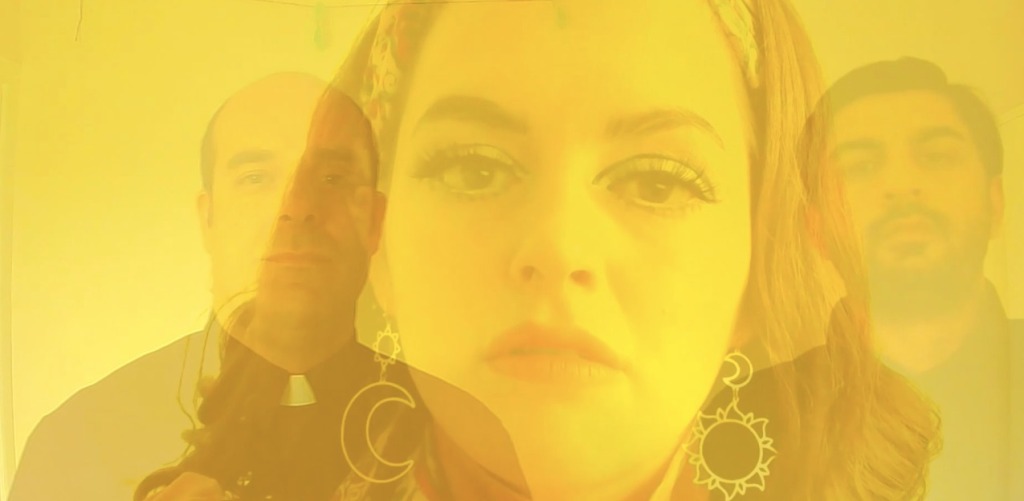Every once in a blue moon, I write a blog post. I guess tonight is a blue moon. I’m writing in response to the Creation Theatre The Duchess of Malfi, a live theatre production hosted on Zoom, directed by Laura Wright and Natasha Rickman. Enterprising companies such as Creation Theatre have produced online shows during the last year but this was the first one I’ve managed to see. It was an interesting experience, so I wanted to write down a few thoughts. I think it’s important, where possible to create some kind of a record of productions of early modern plays, so this is my attempt to contribute to that broader project. I don’t really have time to do much more than hastily write up some barely legible notes I made during the production, but hopefully they’ll prove better than nothing. If you’d like to chip in with thoughts please do get in touch (perhaps use the comment feature below) as I’d be interested to chat further.
Light
The Duchess of Malfi is often read as a chiaroscuro tragedy that works best by candlelight (the play is perhaps best associated with the Blackfriars playhouse, although the title page of the first quarto tells us it was also played at the Globe). The waiting room into which we entered before this Zoom production began, playfully advised us that to best enjoy the show we should turn off our lights and light a candle. But the show itself subverted these expectations. This was a surprisingly, and pleasingly colourful production in which almost every scene was filtered through a coloured background. Below, for example, you can a scene in which the Duchess (Annabelle Terry), the Cardinal (Giles Stoakley) and Ferdinand (Dharmesh Patel) appear in a light yellow hue.

This approach helped to establish the production’s aesthetic, which is, in the words of the company, a ‘1970’s glam’ inspired by the kitsch Italian horror of that period. On the one hand, the aesthetic bears all the hallmarks of the transgressive ‘Jacobean’ as we have come to expect it, but the brash colours on display did, I think, stand in contrast to the darker Malfis we usually get to see (perhaps best characterized by the 2014 candlelit Sam Wanamaker Playhouse production). The brighter, bolder, brasher colours remind us that tragedy happens in multicolour too.
Ghosts
One of the most striking effects of this socially-distanced Zoom production, was the eerie sense of ghostliness it managed to create. Initially, even simple scene changes felt like a bewitching conjuror’s trick, as characters faded in and out of view. More strikingly still, characters appeared to permeate each other. In the image above, the Duchess is confronted by her two brothers. In a conventional production, they might get into her personal space, but in this production, they get into her head, literally. It is a disturbing scene (in this production arguably more disturbing than the more traditionally horrifying Act 4 death sequence, replete though it is with mental and physical torture). There is something queasily horrible about the way the Duchess was trapped on the screen unable to prevent Ferdinand’s violatory encroachment. At the same time, the Duchess floated ethereally, as if just out of reach, as if never quite in his possession.
The corollary of this is that scenes of intimacy and connection were also rendered as spectral, fanciful, wished-for, but not quite achieved. The Duchess and Antonio reached for each other, and their bodies briefly merged, but they reached out and past each other in a way that suggested their desires were thwarted or compromised. Throughout the production the actors had to look at us to look at each other so even what seemed like a regular conversation appeared uneasily off-kilter. A sense of ghostliness ran through the entire enterprise because, of course, the actors were not in the same room as each other.
When characters died, they tended to simply fade away, or fall from our view. Where do they go? Isn’t that a question! In the play’s final speech, Delio (Andy Owens), who entered with the Duchess’ young son (in this production, daughter) spoke lines that felt newly evocative in a production so sharply effective at emphasizing the ghostly, ghastly permeability, and fragility of the human form.
These wretched eminent things
Leave no more fame behind ’em, than should one
Fall in a frost, and leave his print in snow;
As soon as the sun shines, it ever melts,
Both form and matter.
The Duchess, Bosola (Graeme Rose), Antonio (Kofi Dennis) the Cardinal, and Ferdinand (five of the six speaking roles in this pared-down, 1 hour 40 minutes production), melted away like snow prints in the sun, but Creation Theatre left a more lasting memory. This remarkable production leaves more fame behind it.